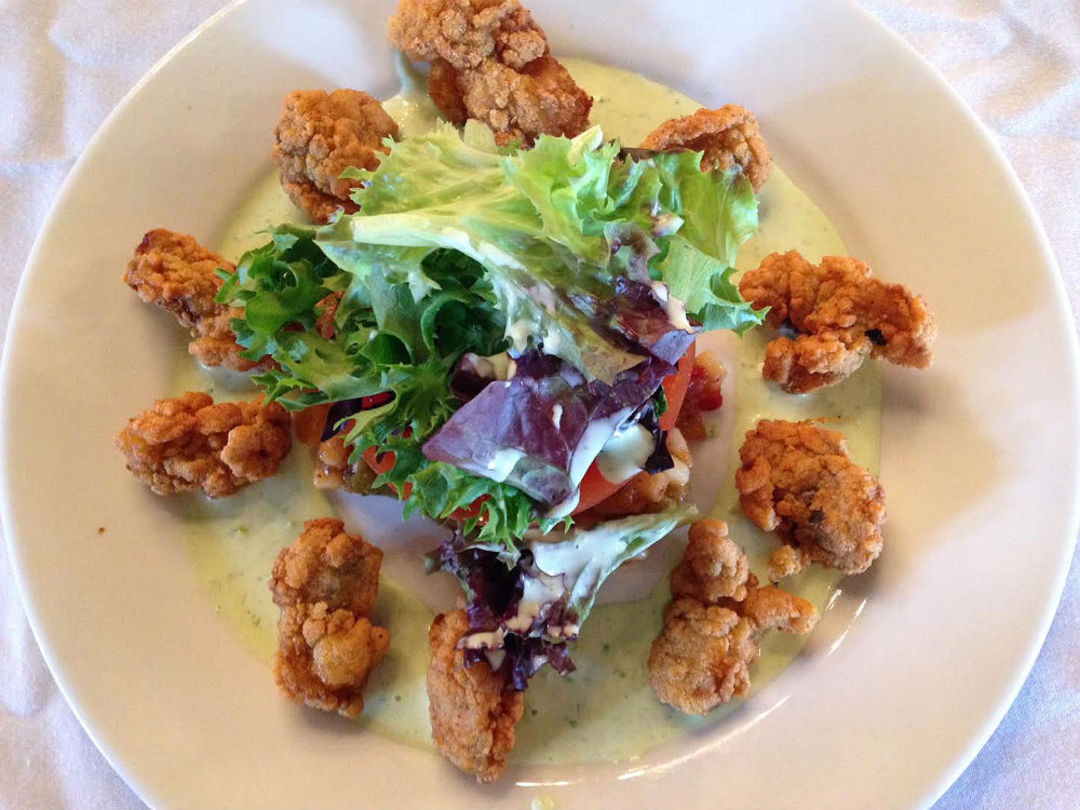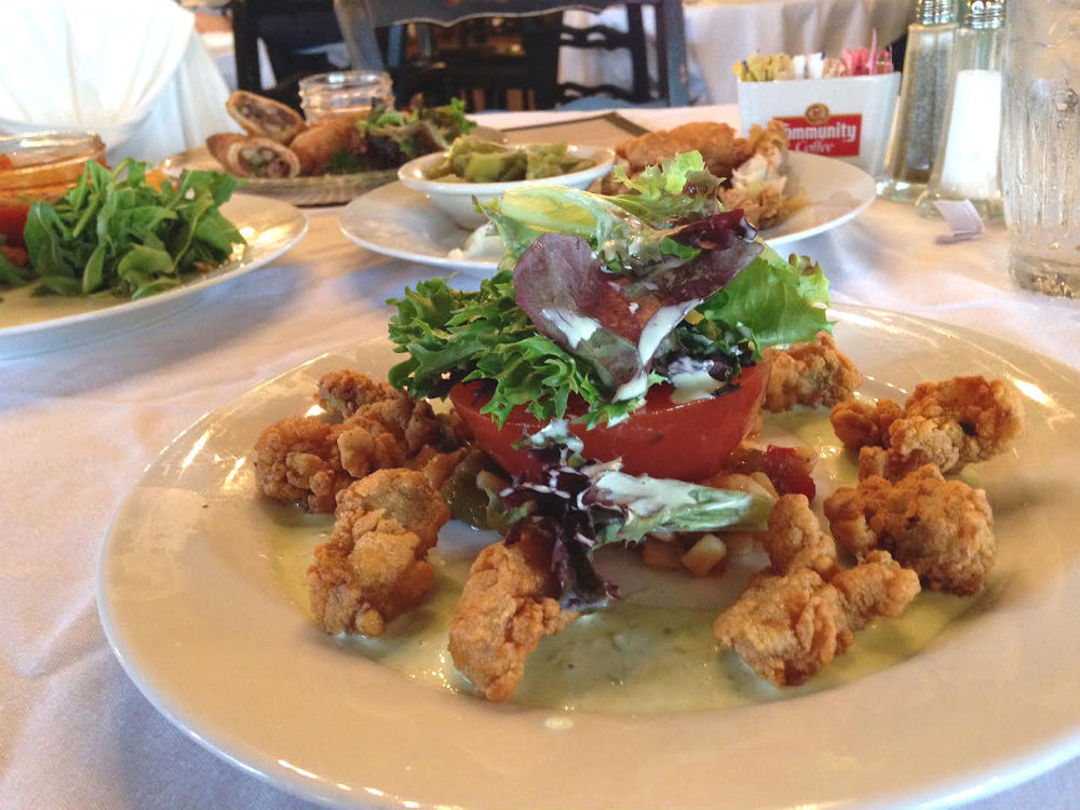The Allure of Aspic

Fried oyster and tomato aspic salad at The Carriage House in Natchez, MS.
Image: Katharine Shilcutt
In my 33 years of eating in Houston, I've only seen aspic on the menu once. Granted, I wasn't paying a whole lot of attention for roughly one-third of those years, and by the time I became seriously interested in food as a teenager, aspic had long since fallen from grace.
Funny, too, as humans have been eating aspic—at least as it's still currently defined—for the last 700 or so years. Savory aspics, which I have always secretly found disgusting, even predate the fruit-flavored aspics (or gelatins, or Jell-O cubes, or "jellies" depending on where you're from) that I'd venture to say more people are familiar with these days. The gelatinous stock that's left over when cooking meat naturally congeals into aspic; we just began clarifying the mixture (removing the cloudiness with egg whites) and adding meats, vegetables, and other ingredients and calling the result "aspic" around the 14th century (though the venerable Food Timeline diverges on this matter).
For whatever reason, aspics fell out of favor after reaching a frenzied pinnacle of popularity in the 1960s. I have vivid memories of reading my grandmother's cookbooks from the era and being repulsed by the gelatin molds and aspics that rendered asparagus spears and hardboiled egg slices frozen helplessly in an unnaturally colored suspension. Perhaps I wasn't alone in this visceral response (or perhaps the fad had simply reached its untenable apex), and Americans everywhere quietly agreed to stop making the hideous stuff some time in the 1970s.
Still, that hasn't stopped some people from pushing for aspic's return—often despite having no firsthand experience with the classic preparation. "I have never eaten an aspic dish but want to make one since clearly they must have been good if everyone was making them," lamented a poster on the Chow message boards five years ago. "Any insight into why this trend went away and do you think it will come back?"

The tomato aspic looks innocuously like a tomato hemisphere.
Image: Katharine Shilcutt
I was personally prepared for aspic to never make a comeback. That is, until I tasted my first tomato aspic yesterday afternoon at The Carriage House in Natchez, Mississippi, where chef Bingo Starr (yes, that's his real name) serves lunch in the renovated carriage house tucked behind a stately mansion which once belonged to a cotton baron. There, the staunchly Southern menu contains a fried oyster salad with homemade green onion dressing and a tomato aspic. I'll admit I mostly ordered the salad for the oysters, but was also curious about the dish I'd always hated without ever even trying.
How wrong I was. How very wrong.
The tomato aspic came out looking like a big, ripe-red tomato hemisphere that had been neatly trimmed of skin. It was ringed with delicate oysters, hot and crunchy and fresh from the fryer. I took a bite of both at once and immediately understood the allure of aspic. It was cool and velvety, a striking contrast against those oysters. The concentrated tomato flavor was rich and sweet yet still light on the palate. I couldn't get enough of it, and ate the entire plate with the same rush of discovery that comes from encountering an unexpected new favorite.
I've come to understand in my research that tomato aspics never really went away in the South; my Texas provincialism just assumed all aspics were dead and gone. Still, even cooks in the South aren't predicting the national rebirth of the dish quite yet—despite the potential for a modern kitchen's own, numerous twists on the classic. Could they be discounting aspic without realizing its nascent charm?
Perhaps, as the one place I've seen aspic in Houston is at Oxheart, a cutting-edge restaurant that sets trends instead of following them. And with aspics making a comeback in cities such as San Francisco, maybe an entire aspic revival isn't far behind.




